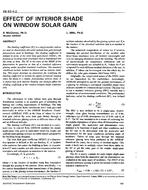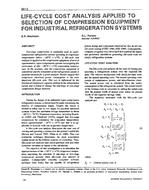Performance simulation has been carried out for several triple-effect cycles, designed to improve utilisation of high-temperature heat sources for absorption systems and capable of substantial performance improvement over equivalent double-effect cycles. The systems investigated include the three-condenser/three-desorber (3C3D) cycle, forming an extension of the conventional double-effect cycle, the recently proposed double condenser coupled (DCC) cycle, which recovers heat from the hot condensate leaving the high-temperature condensers and adds it to the lower-temperature desorbers, and the dual-loop cycle, comprising two complete single-effect loops, recovering heat from the condenser and absorber of one loop to the desorber of the other loop and generating a cooling effect in the evaporators of both loops. A modular computer code for simulation of absorption systems was used to investigate the performances of the cycles and compare them on an equivalent basis by selecting a common reference design and operating condition. Performance simulation was carried out over a range of operating conditions, including some investigation of the influence of the design parameters. Coefficients of performance ranging from 1.272 for the series-flow 3C3D to 1.729 for the parallel-flow DCC have been calculated at the design point. The relative merits and shortcomings of the different cycle configurations have been studied.
KEYWORDS: calculating, performance, absorption refrigeration, thermodynamic cycles, heat recovery, high temperature, condensers, comparing, coefficient of performance.
Citation: ASHRAE Trans. 1994, Vol.100, Part 1, Paper number 3781, 452-462, 11 figs., 2 tabs., refs.
Product Details
- Published:
- 1994
- File Size:
- 1 file , 1.1 MB
- Product Code(s):
- D-17713


